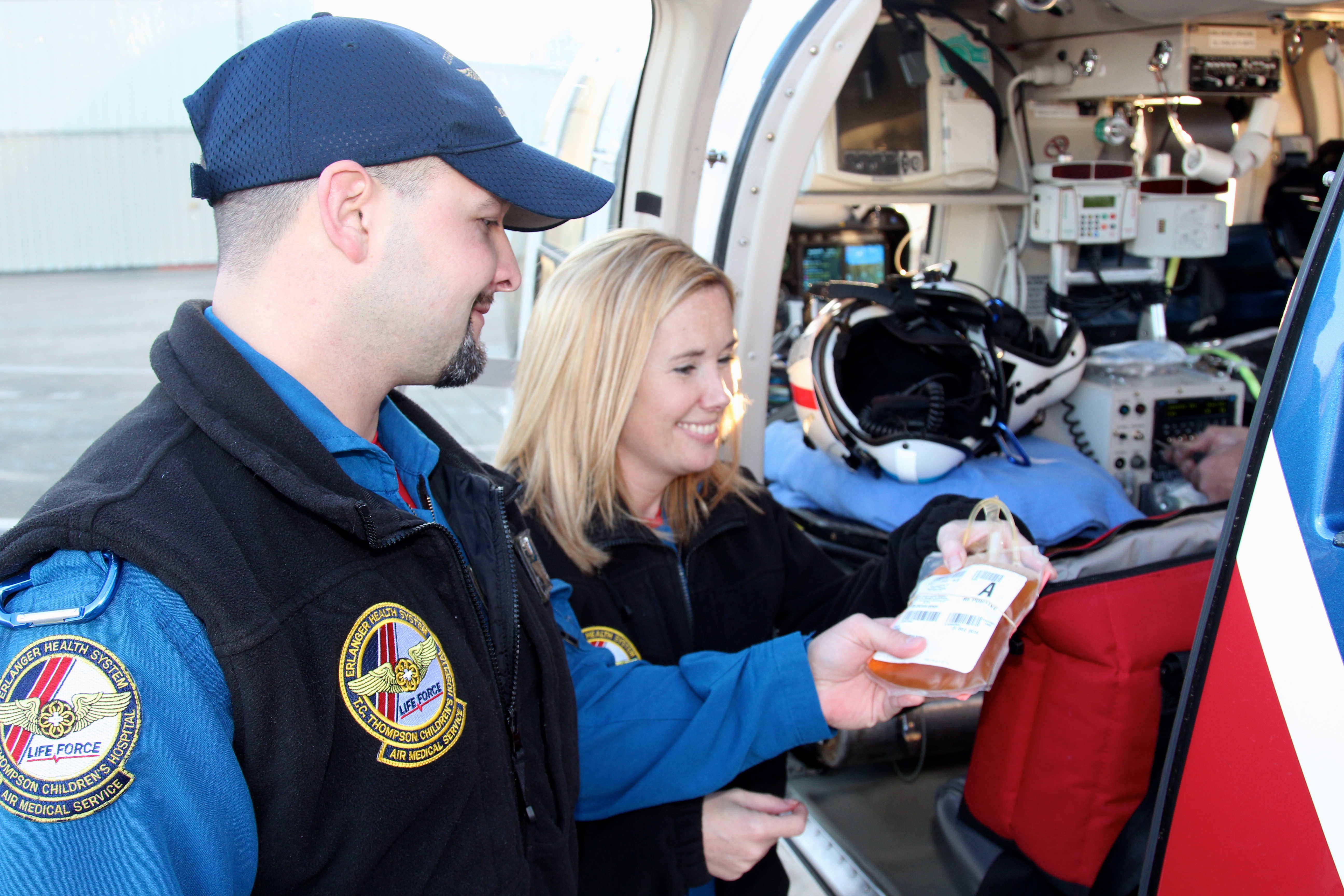The philosophy of Erlanger’s LIFE FORCE Air Medical is simple. Bring as much of the Erlanger Health System as possible to the patients side in the most expedient manner.
While EMS helicopter services are typically thought of for their rapid transport capabilities, just a fast transport is not always what is best for the ill or injured individual. Maintaining a balance of rapid transport and critical care capabilities are some of the many things that Erlanger LIFE FORCE does best.
Completing over 2,000 patient transports by helicopter per year, treating those who are experiencing life-threatening hemorrhage is a common occurrence for the flight crews of LIFE FORCE. Controlling life-threatening hemorrhage to a patient’s extremity can be accomplished with a commercial tourniquet. Hemostatic dressings can greatly aid in bleeding control and commercial wound closure devices can be successful in controlling external bleeding. However, not all bleeding is external. For example, when a patient is losing significant amounts of blood internally from a liver laceration, or when an elderly patient who is on blood thinners is at risk of dying as a result of an intracranial hemorrhage, how will those commercial devices be effective? The answer is simple, they won’t.
On Monday, December 8th, LIFE FORCE added a tool to its capabilities to greatly aid in reducing blood loss. Liquid plasma was added to all LIFE FORCE helicopters as it newest addition to providing critical care. Liquid plasma will provide crucial clotting factors to help minimize bleeding. Typical intravenous fluids that are carried by pre-hospital providers do not have the clotting factors found in plasma or oxygen carrying capabilities found in packed red blood cells. LIFE FORCE will be the first air ambulance service to offer liquid plasma on-board each of its helicopters in the State of Tennessee and Georgia. This capability not only serves as a valuable asset on scene flights with ambulance service providers but also is valuable to rural hospitals that do not have rapid access to plasma. Most hospital systems have fresh frozen plasma that can take up to 45 minutes to properly thaw before it can be administered to a patient. In most cases, LIFE FORCE can be at the patient’s bedside of any hospital in the region and begin plasma administration and transport in less than 45 minutes. This capability allows the patient to receive critical blood products in a more expedient time as opposed to just a fast ride.
LIFE FORCE is one of the first few flight programs in the United States to implement liquid plasma in the transport environment. This is an important addition to the extensive capabilities already offered by LIFE FORCE. All LIFE FORCE aircraft have the capability to provide blood analysis via iStat portable lab machines, and the ability to administer packed red blood cells and tranexamic acid (TXA). The En-Flow fluid warmer device allows flight crew to administer warm fluids to patients to help maintain warm body temperature and prevent shock.
For more information liquid plasma or how LIFE FORCE can help you better serve your patients needs, contact Clinical Educator, Jason Clark at Jason.Clark@erlanger.org.







